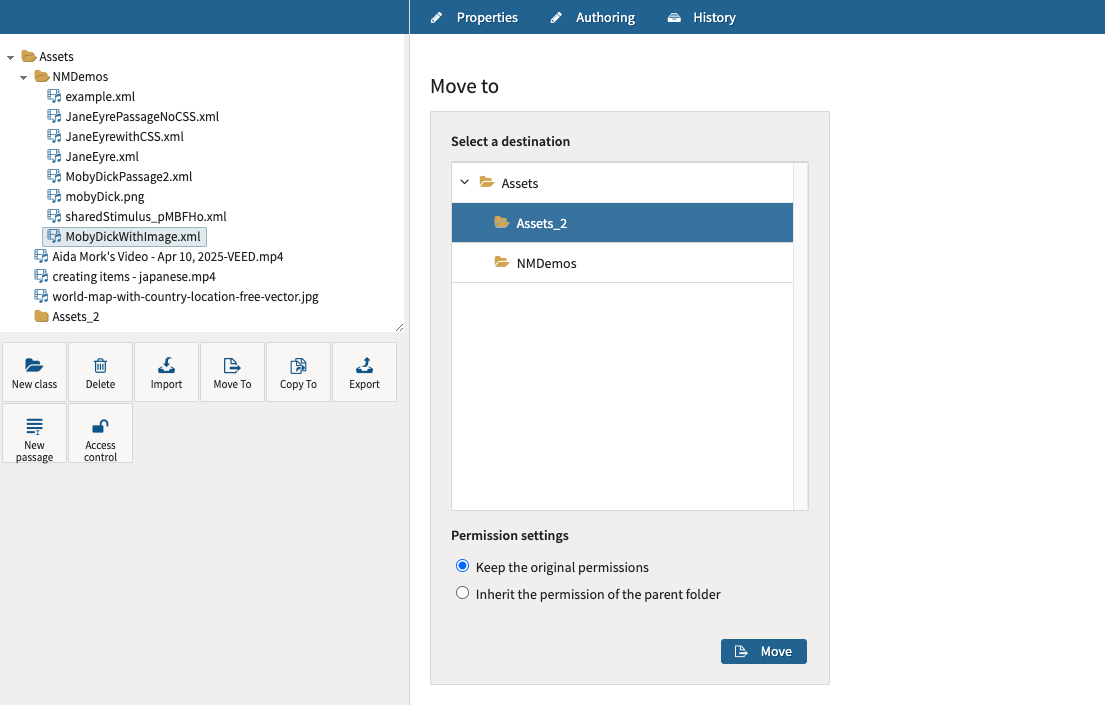Moving assets
Assets can be moved within the same library. The process described in this topic can also be applied when copying assets into different folders within the library.
In any library in TAO you can move elements to a different folder by dragging and dropping them to the new destination. This is, however, limited to desktop environments.
The Move To button allows you to do this in a different, platform-independent way.
1. Click on the Assets tab.
This will take you to your assets library, displayed on the left of your screen.
2. Click on the Move To icon in the button bank under the library.
The following dialog will appear:

Moving assets in the Assets Library
3. To move a single asset, open the item by clicking on it in the library, then select the folder you’d like to move it to, and click on Move at the bottom of the dialog.
You can also move a whole folder (class) of assets with its entire contents to another location in your assets library:
Select the folder in your library which you wish to move.
Click on the Move To button in the button bank under the library. Again, a dialog box will appear on the canvas. Select a destination folder and click on Move.
Whether you are moving a single asset or a folder, you will see a warning telling you that the properties (metadata) of the original class will automatically be replaced by those of the destination class. This means that you will lose the metadata used in the original class, so it’s a good idea to check that no vital information will be lost before you move the class to its new location. When you have checked this, click on Ok to continue.
Permissions settings
The areas that specific users in your TAO instance have access to, and what they can do in those areas, is controlled by access control and permissions. When moving an asset or folder, you will see the option to keep the original permissions of the original location, and the option to update the permissions to reflect those of the asset or folder’s new location.
When moving resources (such as assets and folders) via drag and drop, whatever is the default permissions inheritance configuration will be applied automatically. You can view your environment’s default permissions inheritance configuration by selecting the Move to or Copy to buttons - whatever is the automatically selected option reflects the applied configuration when using drag and drop.
